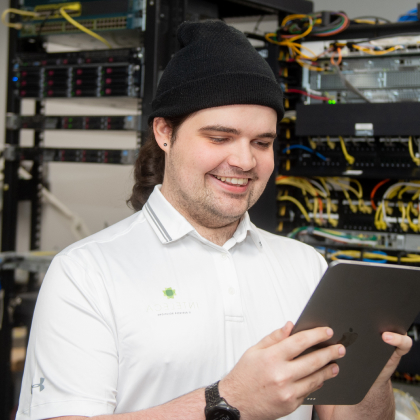How IoT is set to connect the future of business and the world
A decade ago, it used to be an interesting observation to see how many people were connected 24/7 through a mobile device—after all, the smart phone 10 years ago was simply in its infancy. In fact, 10 years ago the ability to surf the internet, connect to social media, perform online banking, and check the weather was considered to be nothing short of a modern miracle. However, with 10 years behind us the aforementioned list of wonders now seems so mundane that it would be embarrassing to even mention it in public.
And why has a decade changed us so much? With the advent of the smart phone came something far greater than what we ever imagined: a Star Trek like world where we can quite literally control almost every aspect of our lives. So, welcome to the Internet-of-Things (IoT). The modern age isn’t just about being connected to people anymore, it’s now about connecting to the world around us. From controlling the simplest of things like the temperature in one’s house, to the coffee maker or home alarm system, the ever-accelerating standards of modernity have made even these mundane. Now, it’s commonplace to manage your fitness, diet, even monitor your blood sugar, and more, through an interconnectivity of devices that span the globe and back—all for your convenience.
But how does that impact business? Simply put, if you’re not in it, you’re out of it (thanks Joey Ramone for the slogan). When it comes to IoT, it represents one of the fastest growing segments in business today, if not the fastest. So much so that it is accounting for $19 trillion in corporate profits and cost savings over the next ten years. It’s predicted that companies will ship 1.9 billion connected home devices, accounting for more than $490 billion in revenue. And if there is any question as to the value of being in the IoT business, let’s not forget that Google purchased smart thermostat maker Nest Labs for $3.2 billion, and Samsung purchased connected home company SmartThings for $200 million—not bad for companies that had the simple idea of “what if I had an app for….”
So where does that leave us in this whirlwind of IoT dreams, growth and change? It leaves us to deal with the harsh reality seldom thought of in the real world, but all too present in our backroom world of IT infrastructure. And that’s two crucial things: data and security.
With the proliferation of IoT devices on a global scale, it’s almost impossible to calculate the amount of data that is transferred per second between data centers and ISPs around the world. For every thermostat, every FitBit, every smart watch, drone, and spying microwave (what … too soon?), there is data that floods the internet connecting all things to everyone. It’s this impact that falls squarely on IT infrastructure to be able to handle this growing challenge—and someone is going to have to know how to handle it, and secure it.
With great data, comes great responsibility—okay a Marvel Comics reference of sorts, but still apt—take the fallout from the attack on IoT devices that affected global security. Just a short time ago—Friday, October 21, 2016, to be exact—the world of IT security took a massive blow. One that forced the hand of IT security specialists and changed the forward thinking landscape for good. A series of Distributed Denial of Service (DDoS) attacks were launched from IoT devices that resulted in widespread disruption of a massive portion of internet-based activity in the US.
The attacks were specifically targeted at the Domain Name System (DNS): a system with the sole purpose of ensuring that information requests on the internet are delivered to the right address. This includes everything from online banking, shopping, social media and more. Everything that is considered to be normal day-to-day stuff to the millions of us that connect to the worldwide web as part of our daily lives.
And the blame for this attack can be placed almost entirely on IoT. You see, the attacks were made possible by the vast number of unsecured internet-connected digital devices, from home routers to thermostats, to surveillance cameras, to microwaves (no seriously, still too soon?). Those that perpetrated the attack used the unsecured nature of the devices to infect them with malicious code to form a Botnet; thus, generating massive amounts of bogus traffic to overwhelm servers.
So where does this leave us? IoT represents the best in human innovations from medical monitoring devices to self driving cars the possibilities are endless, and the rewards are immeasurable. However, with big money to be made and with a bright future yet to be fully realized, having the wherewithal to find the right people that understand both data and security is paramount for future success and peace of mind.
After all, no one wants their infrastructure to be overwhelmed, nor do they want their most intimate secrets shared with the world while microwaving a bowl of popcorn. Okay, okay, I’ll stop. LOL



